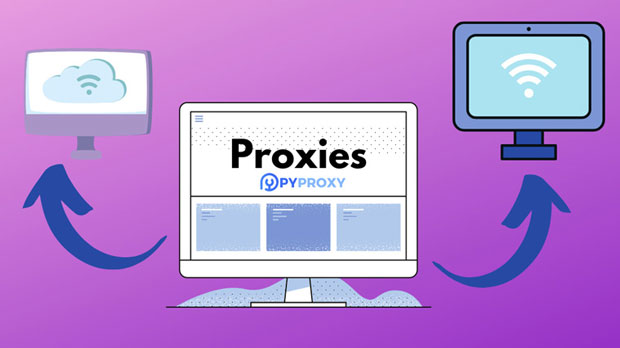When it comes to proxy management solutions, businesses and individual users often seek flexibility, control, and ease of integration across multiple platforms. PYPROXY Proxies, a popular proxy management tool, raises an important question: Does it provide multi-platform protocol control? Specifically, does it offer API, UI, and plugin-based control mechanisms that enable seamless management? In this article, we will delve into the capabilities of PyProxy Proxies in terms of multi-endpoint management, exploring how its API, user interface, and plugins contribute to the effectiveness and versatility of the proxy service. We will examine the strengths and potential limitations of each control method, providing a comprehensive analysis for users looking to implement proxies in a variety of contexts. Understanding PyProxy Proxies: An Overview of the Proxy Management SystemPyProxy Proxies is designed to simplify the integration and management of proxies across different systems, offering users the ability to utilize proxies for security, anonymity, and efficiency. The system supports both residential and data center proxies, providing a scalable solution for users from individuals to businesses. The flexibility of PyProxy Proxies lies in its comprehensive control options. As proxy use cases expand across industries, the demand for robust management interfaces grows. PyProxy Proxies addresses this by offering API access, a user-friendly interface (UI), and plugin integrations. These options cater to a wide range of users, ensuring that they can manage proxies efficiently, no matter the environment in which they are operating.API Control: Flexibility and Automation at Your FingertipsAPI control is a crucial feature for developers and businesses that require automated proxy management. PyProxy Proxies provides a well-documented API that enables users to interact with the proxy system programmatically. This feature is particularly beneficial for large-scale applications, where manual configuration through a user interface would be inefficient and time-consuming. By using the API, users can programmatically configure proxies, monitor usage, and even rotate proxies automatically to avoid bans and enhance anonymity.The API control provides several key benefits:- Automation: Tasks such as proxy rotation, monitoring bandwidth, or tracking connection errors can be automated, saving time and reducing human error.- Scalability: As businesses grow, managing proxies at scale becomes easier with API integration. You can connect your internal systems directly to PyProxy, allowing you to scale your proxy network without manual intervention.- Customization: The API allows for extensive customization based on specific use cases. This can include integrating with custom software, adjusting settings in real-time, or adding new proxies dynamically.However, API control requires a certain level of technical expertise. Developers must be comfortable with API requests and responses, as well as integrating them into their system workflows.UI Control: User-Friendly Management for Non-Technical UsersWhile the API control method caters primarily to developers, PyProxy Proxies also offers an intuitive user interface (UI) for those who may not be as technically inclined. The UI provides a dashboard that allows users to manage proxies without having to write a single line of code. This interface is ideal for individuals or businesses that prefer a visual approach to proxy management.The key features of the UI include:- Dashboard View: The dashboard offers an overview of proxy usage, performance, and system status in a simple, easy-to-understand layout.- Point-and-Click Configuration: Users can configure proxies, select their desired locations, and monitor usage all through a point-and-click interface.- Real-Time Updates: The UI provides real-time updates on proxy performance and issues, enabling users to react quickly to any connectivity problems.The primary advantage of UI control is its accessibility for non-technical users. Businesses or individuals who may not have in-house developers can still manage their proxy network effectively. However, for advanced use cases such as automation, the UI might not be as efficient as the API.Plugin Control: Seamless Integration with Existing SystemsIn addition to API and UI control, PyProxy Proxies also offers plugin-based control, providing yet another layer of versatility. Plugins enable seamless integration with third-party applications, enhancing the overall functionality of the proxy system. These plugins can be integrated into various platforms, including browsers, content management systems (CMS), and even specific software tools like web scrapers or automation tools.Some notable aspects of plugin control include:- Easy Integration: PyProxy Proxies provides plugins for popular platforms like browsers and CMSs, allowing users to instantly integrate proxies without manual setup.- Optimized for Specific Use Cases: Many plugins are optimized for specific use cases, such as web scraping, which means that users can immediately begin leveraging proxies for tasks like data extraction or market research.- Compatibility with Existing Systems: Plugins ensure that the proxy system can easily coexist with existing infrastructure, without requiring major changes to workflows or tools.The main advantage of plugin control is its ease of use and quick implementation. It’s perfect for users who want to quickly set up proxies in their existing software ecosystem without the need for extensive configuration.Combining API, UI, and Plugin Controls: A Comprehensive Proxy Management SolutionWhat sets PyProxy Proxies apart from many other proxy management tools is its ability to combine API, UI, and plugin controls, offering a comprehensive solution that can be customized based on the user’s technical skill set and requirements. Whether you are a developer seeking full control via API, a business owner looking for ease of use through the UI, or a casual user who prefers the simplicity of plugins, PyProxy offers a diverse range of tools for different needs.By providing multi-endpoint management options, PyProxy ensures that users can choose the control method that best aligns with their operations. For larger enterprises, the API provides automation and scalability, while for smaller businesses or individual users, the UI and plugins offer sufficient flexibility and control without the need for deep technical knowledge.Advantages and Challenges of Multi-Protocol ControlThe ability to control proxies via multiple methods—API, UI, and plugins—offers a range of advantages:- Flexibility: Users can choose the control method that suits their environment and technical ability.- Scalability: With API integration, businesses can scale their proxy usage without needing additional human resources.- Efficiency: The UI and plugins allow for faster setup and easier management, minimizing downtime or configuration errors.However, there are challenges to consider:- Complexity: Managing proxies across multiple platforms can sometimes create inconsistencies or require more advanced troubleshooting.- Learning Curve: While the UI and plugins are user-friendly, those who wish to utilize the full potential of the system may need to invest time in understanding the API and its capabilities.Conclusion: A Versatile Proxy Management System for Diverse NeedsIn conclusion, PyProxy Proxies provides robust multi-endpoint protocol control through its API, UI, and plugin options. This multi-faceted approach ensures that users from all backgrounds—whether technical or non-technical—can efficiently manage and scale their proxy networks. By offering a combination of flexibility, scalability, and ease of integration, PyProxy stands out as a comprehensive solution for proxy management. However, users must carefully assess their specific needs to determine the best control method for their situation, ensuring optimal performance and ease of use.
Aug 11, 2025



































































